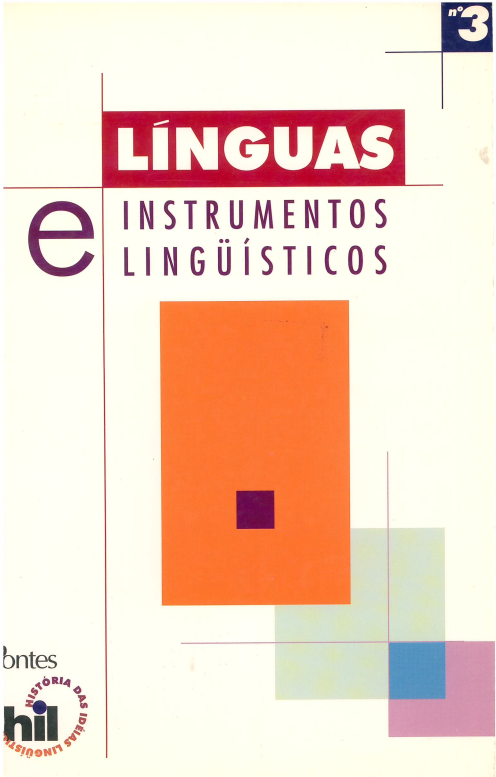Resumo
Este ensaio investiga o evento textual-interativo hipertexto, aqui tomado como ponto de apoio para uma revisão de noções tais como linearização e referenciação. O hipertexto não é um genero textual nem um simples suporte de gêneros diversos, mas como um tipo de escritura. É uma forma de organização cognitiva referencial cujos principios constituem um conjunto de possibilidades estruturais que caracterizam ações e decisões cognitivas baseadas em (séries de) referenciações não-continuas e não progressivas. Considerando que a linearidade linguistica sempre constituiu um principio um principio básico da teorização (formal ou funcional) da língua, o hipertexto rompe esse padrão em alguns níveis. Nele, não se observa uma ordem de construção, mas as possibilidades de construção textual plurinearizada. A questão é: quais as demandas teóricas para a construção do hipertexto e como ele vem servindo aos propositos do leitor-navegador, particularmente no ensino.
Referências
BEAUGRANDE, Robert de. 1997. New Foundations for Science of Text and Discourse: Cognition, Communication, and the Freedom of Acess no Knowledge and Society, Norwood, N.J., Ablex.
BOLTER, Jay David. 1991. Writing space, The Computer, Hypertext, and the Hystory of writing. Hillsdale, N.J., Lawrence Erlbaum Associates.
CHARTIER, Roger. 1998. A Aventura do Livro. Do Leitor ao Navegador. São Paulo, UNESP.
CRUSE, D. A. 1986. Lexical Semantics. Cambridge, Cambridge University Press.
DEE-LUCAS, Diana. 1986. Effects of Overview Structure on Study Strategies and Text Representations for Instructional Hypertext , In: ROUET et alii (eds). 1996, pp. 73-107.
DILLON, Andrew. 1996. "Myths, Misconcepition, and alternative Perspectives on Information Usage and the Eletronic Medium", In: Rouet et alii (eds). 1996, pp. 25-42.
ESPERET, Eric. 1996. " Notes on Hypertext. Cognition, and Language". In: ROUET (ed) 1996, pp. 109-136.
FOLTZ, Peter W.. 1996. "Comprehension, Coherence, and Strategies in Hypertext and Linear Text", In: ROUET et alii(eds) 1996, pp. 109-136.
GAGGI, Silvio. 1997. From text to hypertext. Decentering the Subject in Fiction, Film, the Visual Arts, and Eletronic Media, Philadelphia/University of Pennsylvania.
GIORA, Rachel. 1985. "Towards a theory of conference". Poetics Today 6:669-716.
GRICE, H. P. 1975, Logic and Conversation. COLE. (ed). Syntax and Semantics. Vol IX: Programatics. Oxford, Oxford University Press.
JOYCE, Michael. 1995. OF Two Minds. Hypertext Pedagogy and Poetics. Ann Arbor. The University of Michigan.
KOCH, Ingedore Villaça & Luia Antonio MARCUSCHI. 1998. " Processos de Referenciação na Produção Discursiva", DELTA, 14, N Especial, pp. 169-190.
LANDOW, George P. 1997. Hypertext 2.0 - The Convergency of Contemporany Critical Theory and Tecnology. Baltimore annd London/ The John Hopkins University Press.
LANDOW, George P. (ed) 1994. Hyper/ Text/ Theory. Baltimore & London, The John Hopkins University Press.
MARCUSCHI, Luiz Antonio. 1998. " Referência e Cognição. O caso da Anafóra sem Antecedente ", Apresentando no Encontro de Linguistica, dezebro de 1998, UFJF, Juiz de Fora mimeo.
NELSON, Theodor Holm. 1992. "Opening Hypertext: A Memoir", In Myrion C. TUMAN (ed) 1992. pp. 43-57.
PERFETTI, Charles A. 1996. " Text and Hypertext", In: ROUET et alii (eds). 1996, pp. 157-161.
REINHART, THANIA. 1981. " Pragmatics and Linguistics: an analysis of sentence topics. " Philosophica 27:53-94.
ROUET, Jean-François: Jarmo J. LEVONEN; Andrew DILLON & Rand J. SPIRO (eds.) 1996. Hypertext and Cognition. Mahwah, N.J., Lawrence Erlbaum.
SAEED, John I. 1997. Semantics. Oxford, Blackwell.
SCHEGLOFF, Emanuel A. 1968. "Sequencing in conversation openings". American Anthropologist. 70 (1968): 1075-1095.
SELFE, Cynthia L. & Susan HILLIGOSS. (eds). 1994. Literacy and Computers. The Complication of Teaching and Learning with Technology. New York, The modern Language Association of America.
SNYDER, Ilana. 1997. Hypertext. The eletronic labyrinth. Washington,New York University Press.
TUMAN, Myron, C. (ed) 1992. Literacy Online. The Promise (and peril) of Reading and Writing with Computers. Pittsburgh & London, University of Pittsburgh Press.

Este trabalho está licenciado sob uma licença Creative Commons Attribution-NonCommercial-ShareAlike 4.0 International License.
Copyright (c) 1999 Línguas e Instrumentos Línguísticos

